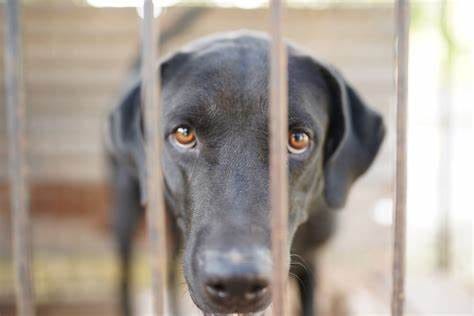A Crisis in Animal Welfare: Access to Veterinary Care for Low-Income Pet Owners
FRONT LINES (with citations)
Access to veterinary care is continually a burdening concern in the United States, particularly for low-income pet owners. While dogs provide companionship, emotional support, and security, financial constraints often prevent owners from seeking necessary medical treatments. This crisis not only impacts the well-being of pets but also contributes to increased euthanasia rates, disease outbreaks, and overpopulation. In particular, the unaffordability of vaccinations, spaying and neutering, and emergency surgeries leave many pet owners with little choice but to surrender or euthanize their beloved animals. Imagine having to choose between a $2000 Vet bill or the euthanization of your best friend. Addressing these issues requires systemic changes, including increased funding for low-cost clinics, public awareness campaigns, and policy reforms.
The Financial Barrier to Veterinary Care
On more than one occasion, I personally have faced the profound ethical and emotional challenge of choosing between life and death of a beloved pet. The burden of this decision was immense, causing significant psychological distress. Each time, I prioritized the well-being of my pet, understanding that surrendering to euthanasia would result in a lifetime of remorse and emotional turmoil. One emergency procedure—necessitating the urgent removal of a gallbladder—incurred costs totaling nearly $15,000, including subsequent veterinary care. Another critical intervention, involving the extraction of a foreign object from the lower intestine, amounted to approximately $6,000. Understandably, these unanticipated expenses would place a financial strain on most budgets.
The exorbitant cost of emergency veterinary care highlights the distressing reality for pet owners with limited financial resources. For individuals and families operating on minimal budgets, the prospect of affording life-saving procedures is often unattainable. As a result, many are forced to make the heartbreaking decision to euthanize their pets, not out of neglect or lack of love, but due to financial constraints beyond their control. This socioeconomic disparity underscores a critical issue in veterinary medicine and animal welfare—access to affordable care. The emotional and psychological consequences of being unable to save a cherished companion due to financial hardship are profound, revealing a pressing need for systemic reforms that ensure all pet owners, regardless of income, have access to essential veterinary services.
Receipts
Veterinary costs have skyrocketed in recent years. According to the American Pet Products Association (APPA), pet owners in the U.S. spent an estimated $35.9 billion on veterinary care and product sales in 2023 alone. However, for families struggling with economic hardship, even basic services such as vaccinations, check-ups, and parasite prevention remain out of reach. According to a 2018 study by the Access to Veterinary Care Coalition (AVCC), nearly 28% of pet owners in the U.S. experience barriers to veterinary care due to financial constraints. The inability to afford routine care often results in the progression of preventable diseases, which later require costly emergency interventions that many owners simply cannot afford.
Euthanasia as a Consequence of Inaccessible Veterinary Care
One of the most tragic outcomes of unaffordable veterinary care is the rising euthanasia rates. According to the American Society for the Prevention of Cruelty to Animals (ASPCA), approximately 390,000 dogs are euthanized annually in shelters across the country. Many of these cases stem from owners surrendering their pets due to their inability to afford medical treatments. Emergency surgeries, such as those required for broken bones, tumors, or internal injuries, can cost thousands of dollars—well beyond the means of low-income families. When faced with the heartbreaking choice between financial ruin and their pet’s suffering, euthanasia often becomes the only viable option.
The Impact of Unaffordable Vaccinations
Routine vaccinations play a crucial role in preventing deadly diseases such as rabies, parvovirus, and distemper. However, the high cost of vaccinations puts many pets at risk. A rabies vaccine, which is legally required in most states, can cost between $15 and $30 per dose, while a full set of puppy vaccinations may exceed $100. When pet owners cannot afford these preventive measures, outbreaks of infectious diseases increase, leading to suffering, increased veterinary costs, and often euthanasia.
Furthermore, the lack of affordable spay and neuter services exacerbates the pet overpopulation crisis. The ASPCA estimates that approximately 3.1 million dogs enter U.S. shelters every year, many of them due to unplanned litters. When pet owners cannot afford to sterilize their animals, unwanted pregnancies occur, increasing the number of stray and surrendered dogs. Without access to basic medical care, these dogs are at greater risk of disease, malnutrition, and eventual euthanasia.
Measures to Improve Access to Veterinary Care
Addressing this crisis requires multi-faceted solutions that involve government policies, community initiatives, and veterinary industry reforms. Below are several key strategies that can improve access to veterinary care for low-income pet owners:
Expansion of Low-Cost Veterinary Clinics – Nonprofit organizations and local governments should invest in subsidized veterinary clinics that provide essential services at reduced rates. Programs such as the Humane Society’s Rural Area Veterinary Services (RAVS) and the ASPCA's mobile clinics have demonstrated success in reaching underserved communities.
Financial Assistance Programs – More charitable funds and grant programs should be established to help low-income pet owners afford emergency surgeries and treatments. Organizations such as RedRover Relief and The Pet Fund already provide such services, but greater public and private investment is needed.
Legislative Support for Affordable Veterinary Care – State and federal governments should consider policies that provide tax breaks or subsidies for low-income families seeking veterinary care. Additionally, licensing fees from breeders and pet stores could be allocated toward funding low-cost spay/neuter programs.
Increased Public Awareness and Education – Pet owners should be informed about preventive care options and the long-term cost savings of vaccinations and sterilization. Community outreach programs and partnerships with veterinary schools can provide low-cost services while educating the public on responsible pet ownership.
Telemedicine and Mobile Veterinary Services – The expansion of telehealth services for pets can provide accessible and affordable consultations for minor illnesses, reducing the financial burden on pet owners and preventing conditions from worsening due to delayed treatment.
Conclusion
The inability to afford veterinary care is a significant factor in the high rates of euthanasia, disease outbreaks, and pet overpopulation in the U.S. For low-income pet owners, the financial burden of essential medical treatments often leads to heartbreaking decisions, including surrendering or euthanizing their pets. By expanding low-cost clinics, increasing funding for financial assistance programs, implementing supportive legislation, and promoting preventive care, we can ensure that all dogs, regardless of their owners’ financial status, receive the medical attention they deserve. Addressing this issue is not just a matter of animal welfare—it is a societal responsibility to support the bond between people and their pets while preventing unnecessary suffering.
References
American Pet Products Association. (2023). "Pet Industry Market Size & Ownership Statistics." Retrieved from [https://www.americanpetproducts.org]
Access to Veterinary Care Coalition. (2018). "Access to Veterinary Care: Barriers, Current Practices, and Public Policy." Retrieved from [https://pphe.utk.edu]
American Society for the Prevention of Cruelty to Animals (ASPCA). (2023). "Pet Statistics." Retrieved from [https://www.aspca.org]
Humane Society of the United States. (2023). "Rural Area Veterinary Services." Retrieved from [https://www.humanesociety.org]








